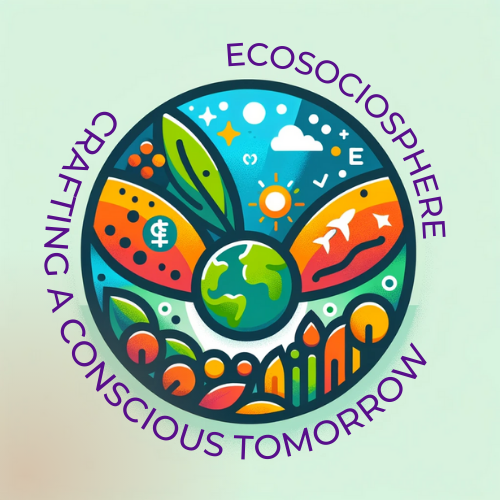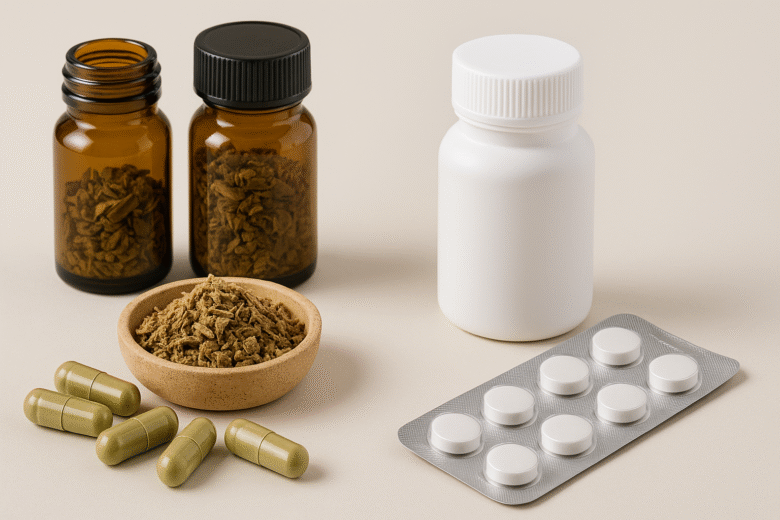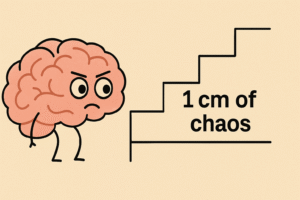Fun fact: In India, some tribal communities still use snake stones—porous black stones believed to absorb venom—for treating snakebites, and now researchers are taking a second look at why they might work.
Imagine this: a man in rural Chhattisgarh is bitten by a snake. His family rushes him not to the nearest hospital, but to a village elder who chants, crushes leaves, and applies a dark stone to the wound. You might scoff. But what if I told you some of the herbs used in these rural remedies have recently shown antivenom properties in lab studies?
This is the strange, fascinating intersection where belief meets biochemistry. In a world powered by robotic surgeries and designer drugs, traditional medicine still pulses quietly in the background—and sometimes, science catches up.
This article explores traditional Indian remedies that have not only stood the test of time but are now getting modern scientific validation. From snakebite cures and turmeric paste to neem sticks and leech therapy, let’s journey through the dusty paths of folklore that are now lit up by lab lights.
The Curious Case of the Snake Stone
For generations, snake stones—also called “vishakanta”—have been used in rural India, Africa, and parts of Southeast Asia to “suck out” venom. While modern medicine rightly insists on antivenom and hospital care, researchers from the Indian Institute of Science (IISc) in Bengaluru have explored how porous carbon-based materials might actually bind to certain toxins.
Could the traditional snake stone be dismissed as superstition—or is it an overlooked piece of scientific insight? The truth may lie somewhere in between. While not a replacement for antivenom, these traditional tools may inspire new detoxification methods.
Haldi Isn’t Just for Milk
Turmeric (Curcuma longa) has moved from grandma’s kitchen to the shelves of Whole Foods Market (a US-based organic supermarket chain) and clinical trials at AIIMS (All India Institute of Medical Sciences). The active compound, curcumin, is now studied for its anti-inflammatory, antioxidant, and even anti-cancer properties.
Turmeric pastes used for wound healing in rural homes are being re-evaluated by dermatologists. A 2021 study published in the Journal of Ethnopharmacology showed that turmeric-based creams significantly improved healing in post-surgical wounds. Turns out, dadi was right.
Leech Therapy: From Ayurveda to Allopathy
Leeches, the slimy creatures you wouldn’t want on your body, are being reintroduced in elite hospitals like Apollo Hospitals for microsurgery. Why? Their saliva contains hirudin, a natural anticoagulant that prevents blood clots and improves circulation.
Ayurveda has long used leech therapy—Jalaukavacharana—for skin diseases, varicose veins, and even joint pain. What was once dismissed as medieval nonsense is now part of modern plastic surgery protocols. In fact, the US FDA (United States Food and Drug Administration) approved leeches as “medical devices” in 2004.
Neem: From Street Trees to Sterile Labs
That bitter neem (Azadirachta indica) twig your grandmother used as a toothbrush? It’s now being explored by dental researchers. The Indian Dental Research Foundation found neem’s antibacterial properties to be effective in reducing plaque and gingivitis.
Today, neem extracts are part of mouthwashes, skin creams, and even contraceptives. What was local and “low-tech” is now a part of global health strategies.
Ashwagandha: The Indian Ginseng with Global Hype
Ashwagandha (Withania somnifera), a staple in Ayurvedic rasayanas (rejuvenating tonics), is now marketed by wellness companies like Himalaya Wellness Company (an Indian herbal health and personal care brand) and Organic India (known for natural wellness products).
Why the fuss? Modern research links ashwagandha to reduced cortisol levels (stress hormone), improved sleep, and even increased fertility in men. A 2022 randomized controlled trial published in the Cureus Journal found it helped significantly with anxiety and cognitive function.
So yes, that powder in the brown bottle may work better than your pricey sleeping pills.
Amla and Gut Health: Grandma Was the Original Nutritionist
Before probiotics were fashionable, India had amla (Indian gooseberry), fermented pickles, and curd. Amla, rich in Vitamin C and antioxidants, is now recognized for its ability to aid digestion, regulate cholesterol, and support immune function.
CSIR (Council of Scientific & Industrial Research) studies have explored how traditional fermented foods contribute to microbiome diversity, a key component of modern gut health science.
Cautious Optimism: What Science Validates—and What It Doesn’t
Let’s not romanticize everything. Not all traditional remedies are effective—or safe. Cow dung, mercury, or lead-based bhasmas (metallic preparations) can be toxic. Blind trust in traditional medicine without evidence can delay necessary medical interventions, sometimes fatally.
However, dismissing centuries of empirical knowledge as superstition is also dangerous. Many of these practices emerged from generations of careful observation and trial-and-error. What’s missing is the bridge—and that’s where modern research comes in.
Case Study: Kottakkal Arya Vaidya Sala
Founded in 1902, Kottakkal Arya Vaidya Sala is one of India’s most respected Ayurvedic institutions. It’s not a dusty hall of herbs—it has R&D (Research and Development) labs, clinical trials, and even ISO certifications. Here, classical formulations are subjected to modern testing, providing models for integration without dilution.
This approach could redefine healthcare for millions—especially in a country where 70% of rural populations still rely on traditional healers as their first point of contact.
When the Two Worlds Meet: The New Integrated Medicine
Institutes like AIIA (All India Institute of Ayurveda) are now promoting integrative healthcare—where traditional practices are combined with allopathy. Instead of seeing them as competing, we need to view them as complementary.
For instance, Ayurvedic massage may reduce anxiety before surgery. Herbal teas could ease chemotherapy-induced nausea. The key lies in choosing evidence-based practices rather than cherry-picked beliefs.
Conclusion: Science Doesn’t Always Wear a Lab Coat
India doesn’t have to choose between chanting mantras and magnetic resonance imaging (MRI). What we need is respect—for knowledge systems, for research, and for lived experiences. Some remedies may feel like folklore, but dig deep enough, and you’ll find molecules, data, and healing.
So the next time your grandmother offers you ginger for nausea or haldi doodh for a cold, maybe don’t roll your eyes. Science may already be on her side.
Author’s Note:
This article isn’t an argument for going full herbal or ditching antibiotics. It’s a call to stay curious, question everything—including tradition—and honour the wisdom that modern labs are only now beginning to understand.
G.C., Ecosociosphere contributor.
References and Further Reading:
- IISc Study on Traditional Snakebite Remedies
- Journal of Ethnopharmacology – Turmeric in Wound Healing
- AIIA – All India Institute of Ayurveda
- Medicinal Leeches
- CSIR on Probiotics and Traditional Ferments
- https://pubmed.ncbi.nlm.nih.gov/32952058
- https://greenwichkottakkalayurveda.com/ayurveda-in-kerala-greenwich




